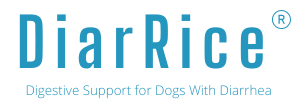Dangers of Feeding Dogs Raw Bread Dough: Risks and Veterinary Advice

When you consider treating your dog, it’s crucial to recognize the potential hazards of certain foods. Raw bread dough, often overlooked as a risk, can lead to serious health complications for your canine friend. Understanding why this seemingly harmless kitchen staple poses a threat is important for every dog owner.
Raw bread dough expands within the warm environment of a dog’s stomach, leading to potential bloating and blockages that can put your dog’s life at risk. The yeast in the dough also ferments, producing alcohol which can result in alcohol poisoning. Symptoms such as vomiting, weakness, disorientation, and breathing difficulties may indicate such poisoning. For these reasons, keeping raw bread dough out of reach is a key aspect of responsible pet ownership.
Key Takeaways
- Raw bread dough can cause bloating and alcohol poisoning in dogs.
- Symptoms include vomiting, weakness, and breathing difficulties.
- Preventive measures are crucial for your dog’s safety.
The Risks of Raw Bread Dough to Dogs
When you feed your dog raw bread dough, you’re exposing them to serious health risks. The dough can ferment in the stomach, producing dangerous substances and potentially causing physical blockages.
Fermentation and Gas Production
Yeast in the dough ferments in the warm and moist environment of your dog’s stomach, resulting in the production of carbon dioxide gas and ethanol. This can cause the stomach to expand, leading to discomfort or more severe conditions like bloat.
Alcohol Poisoning from Dough Ingestion
The ethanol produced during fermentation is rapidly absorbed into the bloodstream, leading to alcohol poisoning. This is a form of alcohol toxicosis, which can result in vomiting, weakness, coma, and even seizures.
Physical Impacts and Obstruction Risks
If ingested in large amounts, dough can expand inside the stomach, creating a distended stomach. This may progress to gastric dilatation and volvulus (GDV), a life-threatening emergency that may require surgical removal to resolve intestinal obstruction.
Symptoms and Immediate Actions
Signs of dough toxicity include vomiting, distended abdomen, weakness, and collapse. If you notice these symptoms, it’s imperative to induce vomiting under veterinary guidance and seek immediate veterinary care.
Assessment and Treatment by Professionals
Upon arrival at the vet, a presumptive diagnosis can be made based on symptoms. Gastric lavage (stomach pumping) may be performed as well as IV fluids for fluid therapy, alongside other supportive care as part of the treatment.
Treatment and Management Advice
After the initial emergency, continuous monitoring and management by a veterinarian are crucial. This may include fluid therapy to manage symptoms and prevent further absorption of toxins.
Secondary Risks and Considerations
Keep in mind that just like foods such as chocolate, xylitol, garlic, and salty items like butter can be toxic to dogs, raw dough is equally hazardous. Dogs’ indiscriminate eating habits, especially around the holidays when bread baking is common, increase these risks.
Safe Alternatives and Prevention Strategies
When thinking about your dog’s diet, it’s essential to focus on both safe food choices and effective ways to prevent accidental ingestion of harmful substances.
Safe Treats and Foods for Dogs
Offer your dog foods that are not only nutritious but also safe. Avoid raisins, which can be very toxic to dogs. Instead, opt for:
- Carrots: A crunchy, low-calorie treat.
- Cooked lean meats: Ensure they are free from harmful seasonings and bones.
- Apples: Without the seeds, as a source of fiber and vitamins.
Remember to always cut treats into small, manageable pieces to prevent choking.
Preventing Accidental Ingestion
Dogs often have indiscriminate eating habits, which means prevention is crucial. Implement these strategies:
- Keep food out of reach: Store dough and other unsafe foods where your dog can’t access them.
- Trash security: Ensure garbage cans are sealed to prevent your pet from foraging.
Educate your family about the dangers certain foods pose to pets, especially dough and sweets.
Understanding Canine Dietary Needs
Your dog’s dietary requirements vary based on breed, age, and health. It’s best to consult with a veterinarian to tailor a diet plan. Always consider potential allergies and how treats fit into the overall diet, keeping sugar and calorie intake in moderation. Remember, just because dogs can eat bread does not mean they should, especially when it poses risks.
Frequently Asked Questions
When dealing with the consumption of raw bread dough by dogs, it’s crucial to understand the risks and appropriate actions to take.
What are the potential health risks for dogs consuming raw bread dough?
Ingesting raw bread dough can be harmful to your dog due to its expansion inside the warm stomach, causing bloating and possibly leading to a life-threatening condition known as gastric dilatation-volvulus (GDV). The yeast in dough also produces alcohol, which can result in alcohol poisoning.
What should I do if my dog ingests raw pizza dough?
If your dog consumes raw pizza dough, you must seek veterinary assistance immediately. The expansion of the dough and potential alcohol toxicity are acute emergencies that can quickly become fatal.
How much raw bread dough ingestion is considered dangerous for dogs?
Any amount of ingested raw bread dough can be dangerous for your dog. Even small quantities can expand dramatically and produce sufficient alcohol to cause toxicity.
What are the symptoms of raw dough toxicity in dogs?
Symptoms of raw dough toxicity can include vomiting, abdominal pain, lethargy, and disorientation. Immediate veterinary care is critical as these signs can rapidly progress to more severe complications.
Is there a difference in toxicity between dough with yeast and dough without for dogs?
Yes, dough containing yeast poses a double threat due to expansion and alcohol production, whereas dough without yeast mainly causes gastrointestinal obstruction but is not toxic in the same manner.
Can the eating of frozen raw bread dough cause harm to dogs, and how?
Eating frozen raw bread dough can be harmful as it can still expand once it warms in your dog’s stomach, posing risks similar to those of unfrozen dough, including severe bloating or GDV.
